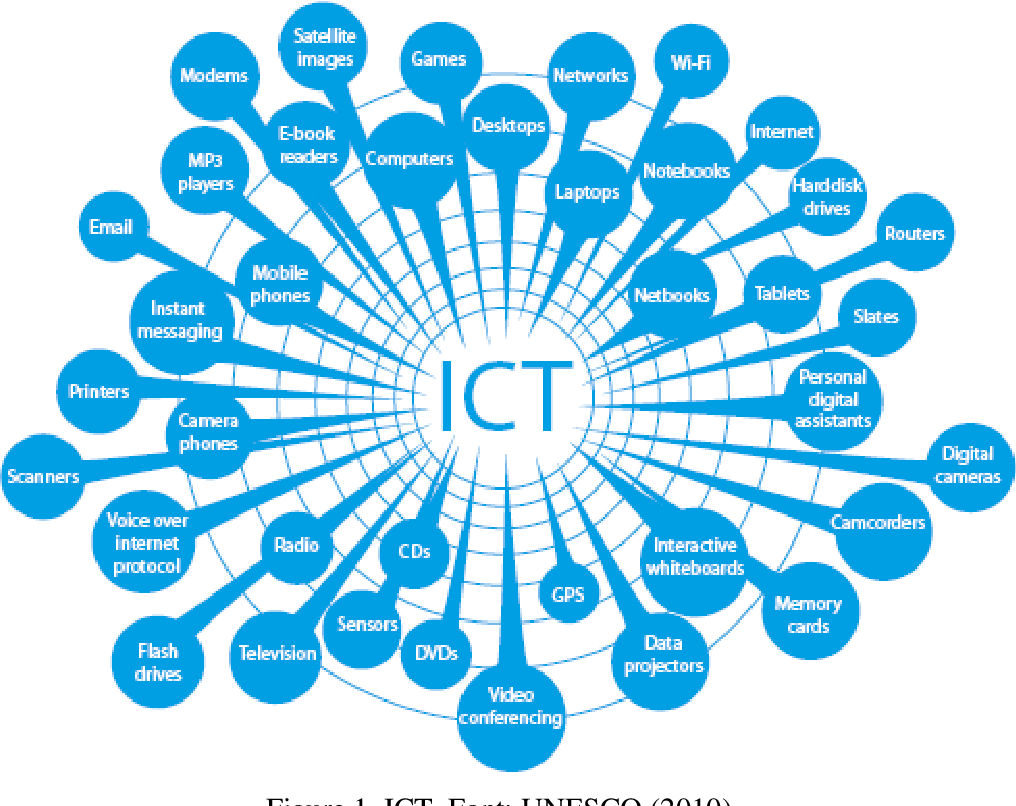
ICT technologies and trends in education
ICT technologies and trends in education
ICTs stand for information and communication technologies and are defined, for the purposes of this primer, as a “diverse set of technological tools and resources used to communicate, and to create, disseminate, store, and manage information.” These technologies include computers, the Internet, broadcasting technologies (radio and television), and telephony.
In recent years there has been a groundswell of interest in how computers and the Internet can best be harnessed to improve the efficiency and effectiveness of education at all levels and in both formal and non-formal settings. But ICTs are more than just these technologies; older technologies such as the telephone, radio, and television, although now given less attention, have a longer and richer history as instructional tools. For instance, radio and television have for over forty years been used for open and distance learning, although print remains the cheapest, most accessible and therefore most dominant delivery mechanism in both developed and developing countries.6 The use of computers and the Internet is still in its infancy in developing countries, if these are used at all, due to limited infrastructure and the attendant high costs of access.
WHAT IS E-LEARNING?
Although most commonly associated with higher education and corporate training, e-learning encompasses learning at all levels, both formal and non-formal, that uses an information network—the Internet, an intranet (LAN) or extranet (WAN)—whether wholly or in part, for course delivery, interaction and/or facilitation. Others prefer the term online learning. Web-based learning is a subset of e-learning and refers to learning using an Internet browser (such as Netscape or Internet Explorer).
WHAT IS BLENDED LEARNING?
Another term that is gaining currency is blended learning. This refers to learning models that combine traditional classroom practice with e-learning solutions. For example, students in a traditional class can be assigned both print-based and online materials, have online mentoring sessions with their teacher through chat, and are subscribed to a class email list. Or a Web-based training course can be enhanced by periodic face-to-face instruction. “Blending” was prompted by the recognition that not all learning is best achieved in an electronically-mediated environment, particularly one that dispenses with a live instructor altogether. Instead, consideration must be given to the subject matter, the learning objectives and outcomes, the characteristics of the learners, and the learning context in order to arrive at the optimum mix of instructional and delivery methods.


